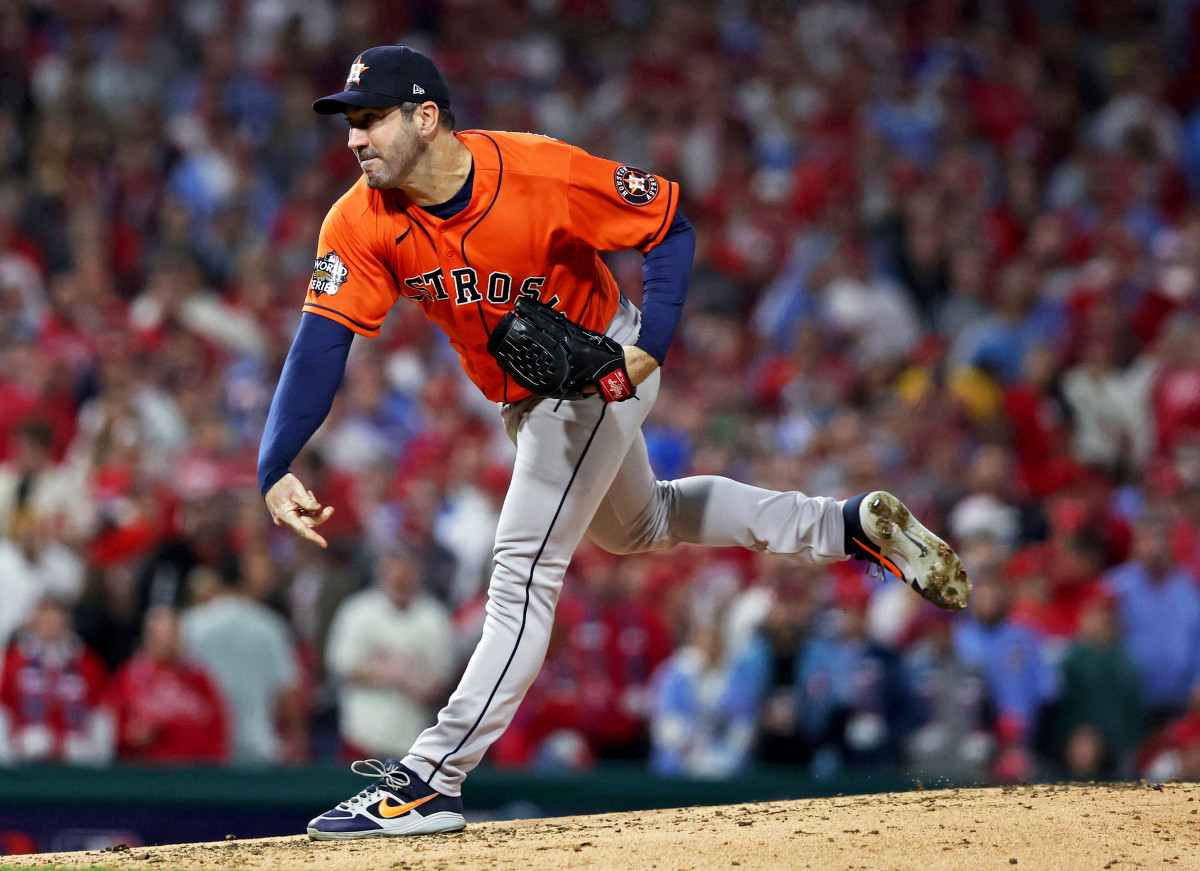Justin Verlander Is an Upgrade Over Jacob deGrom for the Mets
On Friday the Mets lost their best pitcher since Dwight Gooden. Then they got better.
That seems hard to imagine, after they let Jacob deGrom deCamp to the Rangers for five years and $185 million. But for the terms, two years of Justin Verlander at a rate of $86.6 million (with a vesting option that could bring it to $121 million) is an upgrade.

Over his nine-year career, deGrom brought the fans in Flushing an incredible amount of joy when he pitched. But he often did not pitch. Even entering his age-40 season—five years older than deGrom—you can expect Verlander to take the mound most every turn through the rotation. Verlander missed 2021 after undergoing Tommy John surgery; he still threw more innings (175) over the past two years than deGrom (156⅓).
The Mets’ primary task this offseason is to rebuild a pitching staff that dispersed after their 101-win season ended in a disappointing three-game wild-card series loss to the Padres. Of proven pitchers, only co-ace Max Scherzer was guaranteed to return, after deGrom exercised his opt-out, as did No. 3 starter Chris Bassitt; No. 4 starter Taijuan Walker became a free agent, as did closer Edwin Díaz, top setup man Adam Ottavino and reliable relievers Trevor May, Trevor Williams and Seth Lugo; and the club had to decide whether to pick up its option on No. 5 starter Carlos Carrasco. Of the 13 pitchers who made that wild-card series roster, only Scherzer, reliever Drew Smith and young starter David Peterson were on the books for 2023.
General manager Billy Eppler quickly re-signed Díaz, for five years and $102 million, a record for a reliever, and he hoped to bring deGrom back too, but even tridecabillionaire owner Steve Cohen did not want to spend $37 million in 2027 on a 40-year-old with an extensive injury history. (For what it’s worth, deGrom did not give much indication that he was interested in a reunion; he reportedly did not give New York a chance to match Texas’s offer.)
The pivot to Verlander is good news for Mets fans. The team’s other free-agent option for a frontline starter to pair with Scherzer probably would have been Carlos Rodón, who at 29 is a decade younger than Verlander but who only in the past two years produced the kind of dominant results that made him the No. 3 pick in the 2014 draft and who is thought to be seeking at least five years.
Verlander, meanwhile, has shown an ability to adapt as he ages. He was probably a borderline Hall of Famer just as a Tiger, where he spent the first 13 years of his career, racking up a Rookie of the Year Award, a Cy Young Award, an MVP Award, an ERA title and six All-Star selections. But he reinvented himself after a 2017 trade to the Astros, ditching his two-seamer at the team’s suggestion and providing perhaps the most important example for Houston’s young players that the team’s player-development and analysis strategies were sound. In five and a half years with the Astros, including that ’21 season lost to Tommy John surgery, he won two more Cy Youngs, made three more All-Star teams and had a 2.26 ERA.
Verlander has also shown a quality that is perhaps even more important for the Mets as they plot the next two years: a desire to keep pushing for a mark that he might be the last to reach, 300 wins.
“Can I do that?” he told The New York Times early last season. “Yeah.”
Why keep striving for that, after already accomplishing so much in the game—all those other individual achievements, two championships, including finally erasing an aberrant mark on his record by recording his first win in a World Series game, this October—and with a wife and a young daughter and many other interests to keep him busy?
“I mean, that’s just who I am,” he said. “The fire’s still burning.”
He sits at 244 victories, meaning he would have to average 19 per season over those three seasons—or be healthy enough to pitch even deeper into his 40s. Bet on him to try. That’s good news for the Mets.
